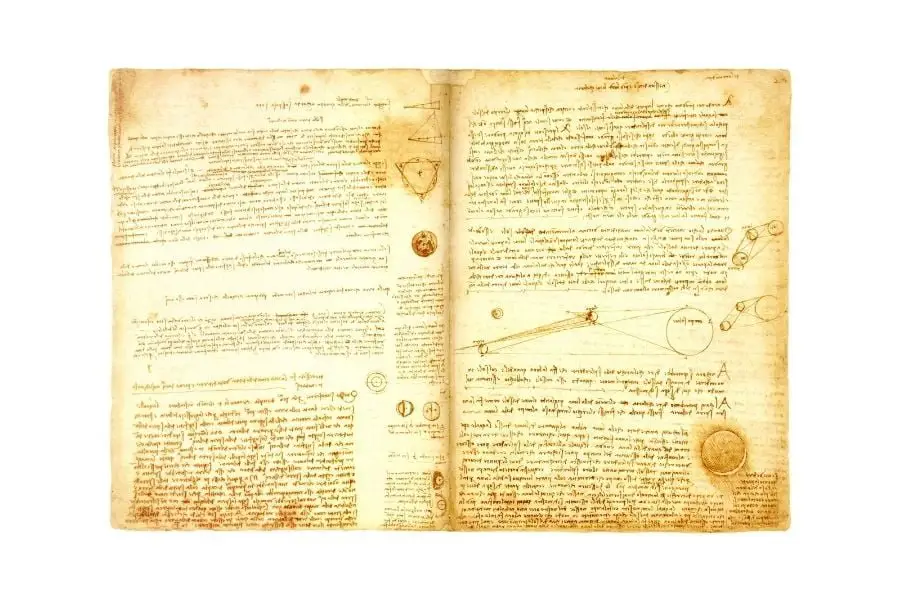Leonardo da Vinci was an esoteric 15th-century artist and thinker of Italy, whose mysterious paintings and theories are still indecipherable to modern scholars and scientists. His queer personality and unusual way of living also made him an exceptional and noteworthy personality of the early renaissance.
Let’s dive into the article to read some lesser-known facts and speculations about the famed medieval personality.
6 Smuggled Facts about Leonardo Da Vinci
1. The illegitimate child

Leonardo da Vinci was born to an unmarried woman named Caterina on 15th April 1452. Even though it may sound unfortunate, his birth became his blessing in disguise. Being born out of wedlock he was seen as an outcast by upper elite class Italians. He was not compelled to take formal medieval education. As a curious natured person, he chose to study whatever interested him from theatre arts to wave dynamics; he observed everything and proposed his theories on a variety of fields.
2. The homsexual lover

Leonardo mostly depicts men in his artworks exposed and muscular, and women covered up and typical. He was well known for having affairs with male escorts and even prosecuted for it.
As medieval Italy is more liberal and accepting, his homosexual personality never affected his career. There are even some assumptions that in his twenties, he was involved in sodomy and was commanded to be executed by the Duke, but Leonardo escaped and lived in secrecy.
3. Daunting smile of Mona lisa
The well sought-after painting of the renaissance artist is the Mona Lisa, Portrait of a mistress which looks normal and dull at first glance. But on the closer look, it looks like her piercing glance that follows us and the flickering smile which vanishes when we focus on her lips and appears back when he focuses on the whole portrait is puzzling many artists till today.
Leonardo mentioned this artwork represents “happiness” as the main theme, so deliberately worked on this masterpiece for several years studying human facial muscles and their movements around lips to accurately depict this alluring smile.
Some artists are also more interested in the scenery behind the women, theorizing which place in Italy is it and why it is depicted that way.
4. The stunning mural of last supper

Next to Mona Lisa, the next remarkable work of Leonardo is The last supper, a mural in the convent of Santa Maria Delle Grazie, a church in the city of Milan, Italy.
Leonardo described the mural as a depiction of the moment in the final gathering of Christ with his disciples when Jesus Christ announced that one of his apostles is going to betray him.
The mural was famous for varied expressions on the faces of the disciples and how Christ is symbolised as being isolated from them. There were numerous speculations about this masterpiece that Leonardo left hidden messages in this painting like Jesus had a wife called “Mary Magdalene ” who was disguising as one of his disciples in this painting.
Some scholars even believe that Leonardo was one of the members of a secret society who knows this shocking truth about Jesus’s marriage, so he conveyed this secret message in this mural.
5. His collection of notes with encrypted handwriting

Leonardo’s notes and diagrams were very cryptic and confusing. His notes are collected and wound together randomly as three-volume scriptures called “codices”.
Most of his notes were written in mirror writing ie. The texts will be right to left direction and can be read-only in a mirror reflection. Some theories suggest that he thought his advanced findings should be indecipherable and not used for wrong purposes.
6. Advanced knowledge about upcoming technologies

The majority of notes and diagrams are about engineering models, human anatomy findings, wave dynamics, weapon models, etc. Those are very advanced technologies even for our times.
Some of his theoretical working models that are developed and used now are,
- flying machines (airplanes and helicopters)
- machine guns
- parachutes
- revolving bridge
- diving equipments
- Triple barrel cannon
- Anemometer (instrument measuring wind speed).
Though he had working theories of these instruments, there is no proof of him experimenting with them which is again raising speculations about his inventions being used secretly by secret societies to wage wars, so they are destroyed later for the greater good of humanity.
Even after 500 years after his lifetime, his contributions to both science and art are unparalleled by any other scholar. Living life differently, with his own rules and musings he continues to be an interesting personality of the past.
